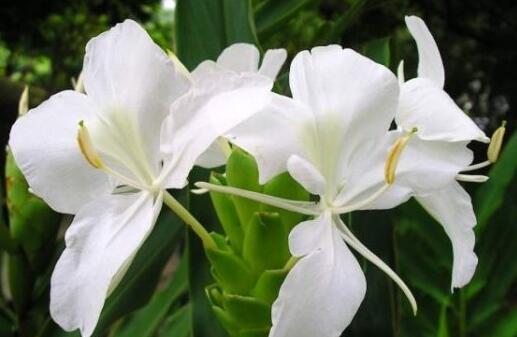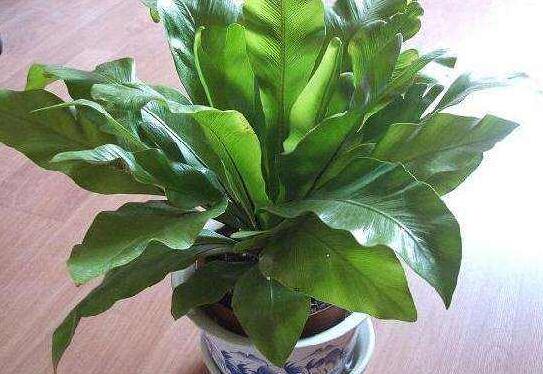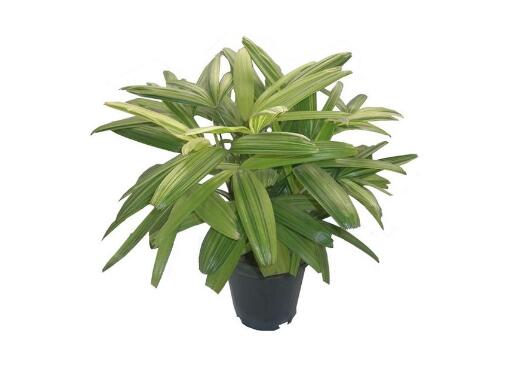How to reproduce ginger flower, the method of propagation / ramet / substrate should not be too wet.
Ginger flower is a kind of flower recognized by many flower friends. It is not only the national flower of Cuba, but also cultivated all over the world. If flower lovers want to raise more pots at home, they can also breed by way of breeding besides buying them. How can ginger flowers reproduce? Let's take a look at the breeding methods of ginger flowers.
How to reproduce ginger flower

According to the characteristics of ginger flower, its reproduction can have asexual reproduction and sexual reproduction, among which ramet reproduction is more used. it is not only easy to operate but also very fast to reproduce. If it is planted in 2-3 months, it can blossom in July-August.
Propagation methods of Ginger Flower
First, how to split the ginger flower
1. Time
Usually choose to split in spring, because the climate is suitable, and changing pots or pruning will also be in spring, you can combine the three together to reduce the maintenance difficulty of flower friends.
2. Methods
⑴, how to reproduce ginger flowers when using ramets? Dig out the underground rhizome of ginger flower from the basin soil, in this process, we should pay attention to dig out the plant with soil mass, and then clean up the soil of the root, which can avoid injuring the root, otherwise it will affect the growth after reproduction.
⑵, use a tool to divide the rhizome into several clumps, each with at least 2-3 buds, and then set aside in a cool place. If you prepare flowerpots and substrates, you will generally choose more fertile and loose sandy soil.
⑶, the cut sub-plants will be planted in the substrate, compacted with soil and then watered thoroughly. If there is no need for transplanting, some bottom fertilizer can be applied to the bottom of the pot before going into the pot, and then keep the temperature at 22-28 degrees. After 20-30 days, it can germinate and grow.
Maintenance and management after breeding
1. It is not suitable to water too much. After planting, you do not need to water too much, water thoroughly for the first time, and then choose to spray water or soak from the bottom of the basin according to the moist condition of the soil. You must not let the incision of the rhizome rot because the substrate is too wet, otherwise reproduction is easy to fail.
2. Shading should be done well. It is best to put the plant in a place where there is bright light and will not be directly exposed to the sun at that time. Even if the reproduction is successful, it should be well shaded when entering the summer. If the light is too strong, it will affect the growth and flowering, and the appropriate light can prolong the flowering period of the ginger flower.
3. Breeding at the right time. Ginger flowers are planted from seedlings and will grow luxuriantly in about 3-4 months. At this time, the flowerpots may be more crowded, so 3-4-year-old ginger flowers are the most suitable for reproduction. When breeding, you can prepare several more flowerpots and choose the number of reproduction as needed.
Culture methods and matters needing attention of Golden Ginger Flower Chinese scientific name Golden Ginger Flower
Don't call it beautiful ginger flower.
The plant kingdom.
Family Zingiberaceae
Genus Zingiberaceae
The distribution area is suitable for growth in Guangzhou area.
Golden turmeric flower (scientific name: Hedychium gardnerianum) is a perennial herb of Zingiberaceae. Golden ginger flower was originally a hybrid variety, and two different flower color types of golden flower and pink flower were separated from the planting results.
1. Morphological characteristics.
The leaf shape of golden ginger is similar to that of edible ginger, and the plant height is about 1.5 meters. Underground rhizome developed, lateral creeping growth, sturdy, yellowish like edible ginger. Leaf blade green, entire, smooth, long elliptic-lanceolate, long 40cm, wide 5~6cm, tip caudate-acuminate, base attenuate; petiole short, leaf sheath green. The early flowering stage is in late May, the flowering stage is from June to October, and the number of flowers decreases sharply in November. Spikes terminal, bracts green, ovate or Obovate, apex rounded or acuminate, usually 3-5 florets in each bract. The florets are dense, the petals are 3, the edges are light yellow, the heart is golden, and the style is elongated and exposed; gradually blooming upward from the lower part, each plant can continuously open up to 80 florets, and the flowering period on the plant can last for more than 1 month. 2. Growth habits
The results showed that Jinjiang flower was suitable for growth in Guangzhou, and the plant grew vigorously and had strong stress resistance except for the slight inhibition of low temperature growth in winter. Like the semi-sunny environment, a little shade is beneficial to the growth, and the quality of fresh cut flowers is better. The suitable temperature for growth is 2530 ℃, which can withstand the high temperature in summer and the lower temperature in winter. When the temperature was lower than 0 ℃, the leaves were slightly damaged by freezing, but the aboveground parts did not wither.
3. Cultivation techniques.
Seedling propagation techniques are divided into sexual reproduction and asexual reproduction. Golden turmeric flower can bear a small number of seeds locally, so it is of little significance to rely on sexual reproduction. The method of tissue culture was successful and the rapid propagation of seedlings in factory was realized. The tissue culture technique is as follows: the germinated buds were cut from the underground rhizome of Flos Lonicerae, after disinfection, the buds were induced on MS 6-BA 5.0mg/L NAA 0.2mg/L medium, and then transferred to MS 6-BA3.0 mg/L NAA0.1 mg/L medium for adventitious bud induction. When the seedlings grew to 2cm, they were cut off and transferred into MS NAA0.1 mg/L medium for rooting induction. The method of ramet reproduction is also fast and effective. The ramet was intercepted from the clump of adult plants and planted in February and March of that year, and it could bloom in May and June. The number of new plants could reach about 20-40 in the whole year, and the flowering quality was good and the yield was high. Generally speaking, tissue culture seedlings can also blossom in the same year, but the quality is poor and the yield is low. The planting method of alpinia officinalis has strong adaptability to the soil, and the cultivated soil is the most suitable for fertile loam or sandy loam with good drainage, but the soil should always be moist or close to the water source, it will grow more vigorously. It can be planted in spring, summer and autumn, but the planting in February and March in spring is the best, and high yield can be obtained in the same year. The average yield per mu is nearly 2000 branches / month in that year, and can reach more than 2200 branches / month in the second year. Before planting, the soil was deeply ploughed, basic fertilizer was applied, and the bed was raised in deep ditches. Single-row planting or double-row planting was adopted, with a row spacing of 50 × 50cm and 2500000 plants per mu. If the condition of fertilizer and water management is good, it can blossom in late May of that year. When a seedling or rhizome is planted, about 20-40 new plants can be divided in the whole year, and more than 15 leaves can blossom.
The meristem ability of field management is strong, the annual growth is large, and sufficient fertilizer and water supply is needed during the whole growth period. Generally, the three-element compound fertilizer should be applied twice a month. A more adequate supply of fertilizer and water should be maintained during flowering. The full flowering stage can be covered with rice straw or substrate, which is beneficial to keep fertilizer, heat preservation and moisture preservation. Cultivating soil and composting in winter is beneficial to the hypertrophy of underground rhizomes and promote the regeneration of new plants in next spring. If the cold current invades, the plastic film can be used to cover the heat preservation in case of freezing, which can avoid freezing damage. Generally, after 3 years of planting, the underground rhizome is easy to aging, the ability of plant regeneration and resistance is weakened, resulting in the aggravation of diseases and insect pests and the increase of weak plants, affecting the product quality. Therefore, it should be re-arranged for new rotation in order to control the occurrence of diseases and insect pests, maintain strong plant growth, promote plant regeneration, obtain higher yield and improve product quality.
The continuous harvest period of golden turmeric flower is long and the yield is high. Fresh cut flowers must be harvested at the right time, and the best ones are full inflorescences, 8-10 buds exposed and unbudded inflorescences. The harvest time should be before 9:00 or in the evening, and where possible, water can be sprayed once before harvest. Cut flowers should be soaked in a bucket to keep fresh in time, placed in a cool and moist place, and moisturized by spray many times, which is helpful to prolong the time of flower arrangement. After harvesting, the cut flowers are concentrated in a cool and humid environment and packed according to the standard of quality grading. The temperature should be controlled at about 27 ℃ during transportation. Too high temperature is easy to promote the bud to open. The bottle life can be greatly extended to more than 7 days in the environment of indoor temperature 27 ℃ and relative humidity 80-90%.
Key points of cultivation of Golden Ginger Flower
I. Seedling propagation techniques
There are sexual reproduction and asexual reproduction. The method of ramet reproduction has fast propagation speed and good effect. The ramet was intercepted from the clump of adult plants and planted in February and March of the same year, and it could bloom in May and June. The number of new plants could reach about 20 to 40 in the whole year, with good flowering quality and high yield. Generally speaking, tissue culture seedlings can also blossom in the same year, but the quality is poor and the yield is low.
II. Planting season and planting mode
The golden ginger flower has strong adaptability to the soil, and the cultivated soil is the most suitable for fertile loam or sandy loam with good drainage, but the soil should always be moist or close to the water source, it will grow more vigorously. It can be planted in spring, summer and autumn, but the planting in February and March in spring is the best, and high yield can be obtained in the same year. The average yield per mu is nearly 2000 branches / month in that year, and can reach more than 2200 branches / month in the second year. Before planting, turn the soil deeply, apply sufficient basic fertilizer, raise the deep ditch and high border, use single-row planting or double-row planting, determine the plant row spacing of 50 × 50 cm, planting 2500000 plants per mu. If the condition of fertilizer and water management is good, it can blossom in late May of that year. When a seedling or rhizome is planted, about 20-40 new plants can be divided in the whole year, and more than 15 leaves can blossom.
III. Field management
Golden turmeric flower has strong meristematic ability and large annual growth, so it needs sufficient fertilizer and water supply during the whole growth period. Generally, three-element compound fertilizer should be applied once or twice a month. A more adequate supply of fertilizer and water should be maintained during flowering. The full flowering stage can be covered with rice straw or substrate, which is beneficial to keep fertilizer, heat preservation and moisture preservation. Cultivating soil and composting in winter is beneficial to the hypertrophy of underground rhizomes and promote the regeneration of new plants in next spring. If the cold current invades, the plastic film can be used to cover the heat preservation in case of freezing, which can avoid freezing damage. Generally, after 3 years of planting, the underground rhizome is easy to aging, the ability of plant regeneration and resistance is weakened, resulting in the aggravation of diseases and insect pests and the increase of weak plants, affecting the product quality. Therefore, it should be re-arranged for new rotation in order to control the occurrence of diseases and insect pests, maintain strong plant growth, promote plant regeneration, obtain higher yield and improve product quality.
IV. Pest control
Golden turmeric flower has the advantages of coarse growth, strong adaptability, good stress resistance and strong resistance to diseases and insect pests. In production, there are mainly borer (drill heart worm) drilling heart damage, Spodoptera litura eating young leaves, mole cricket endangering underground tubers and so on. Generally, it is easy to be harmed by borer in the early flowering period in May and June. The adults lay eggs in the leaf axils or the top of the plant, and after hatching, they drill into the heart, causing the top of the plant to die, unable to blossom or break the flower branches, which seriously affects the yield and quality. In prevention and control, we should give priority to prevention, pay attention to observation, spray in advance, and spray in the spawning period of adults and the early stage of larvae. It can be sprayed with 800x liquid of trichlorfon, 1000-fold liquid of Batan and 1500-fold liquid of Lesben, and a good control effect can be achieved by spraying more than three times continuously.
5. Harvest and preservation of fresh cut flowers
The continuous harvest period of Jinjiang flower is long and the yield is high. Fresh cut flowers must be harvested at the right time, and the best ones are the ones with full inflorescences, exposed buds and unbudded inflorescences. The harvest time should be before 9:00 or in the evening, and where possible, water can be sprayed once before harvest. Cut flowers should be soaked in a bucket to keep fresh in time, placed in a cool and moist place, and moisturized by spray many times, which is helpful to prolong the time of flower arrangement. After harvesting, the cut flowers are concentrated in a cool and humid environment and packed according to the standard of quality grading. The temperature should be controlled at about 27 ℃ during transportation. Too high temperature is easy to promote the bud to open. The bottle life can be greatly extended to more than 7 days in the environment of indoor temperature 27 ℃ and relative humidity 80% / 90%.
- Prev

How to reproduce bird's nest fern, the method of reproduction / ramet or spore reproduction of bird's nest fern
Bird's nest fern is also known as mountain perennial. Because of its strong shade tolerance and large and glossy leaves, it is a very popular foliage plant. Many flower friends evaluate it as one of the best plants to raise, so is it difficult to reproduce? How do bird nest ferns reproduce? Let's take a look at the breeding methods of bird's nest fern.
- Next

How to propagate brown bamboo, the propagation method / sowing propagation / ramet propagation of brown bamboo
Brown bamboo is a kind of highly ornamental plant, and it is cultivated all over our country. With more and more people raising brown bamboo, people are more concerned about its reproduction. About how brown bamboo propagates? What are the breeding methods of brown bamboo? Next, the editor will take you to learn about it.
Related
- Fuxing push coffee new agricultural production and marketing class: lack of small-scale processing plants
- Jujube rice field leisure farm deep ploughing Yilan for five years to create a space for organic food and play
- Nongyu Farm-A trial of organic papaya for brave women with advanced technology
- Four points for attention in the prevention and control of diseases and insect pests of edible fungi
- How to add nutrient solution to Edible Fungi
- Is there any good way to control edible fungus mites?
- Open Inoculation Technology of Edible Fungi
- Is there any clever way to use fertilizer for edible fungus in winter?
- What agents are used to kill the pathogens of edible fungi in the mushroom shed?
- Rapid drying of Edible Fungi

